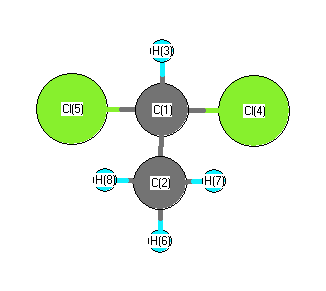.
| squib |
reference |
DOI |
| 1972Dur/Slo:3591 |
JR Durig, AE SLoan, JD Witt "Vibrational Analysis and Barrier to Internal Rotation of 1,1-Dichloroethane and 1,1-Dichloroethane-d4" J. Phys. Chem.1972 76, 24, 3591-3597 |
10.1021/j100668a016 |
| 1976Hellwege(II/7) |
Hellwege, KH and AM Hellwege (ed.). Landolt-Bornstein: Group II: Atomic and Molecular Physics Volume 7: Structure Data of Free Polyatomic Molecules. Springer-Verlag. Berlin. 1976. |
|
| 1997Sug/Kat:487 |
M Sugie, M Kato, C Matsumura, H Takeo "Microwave spectra and molecular structures of 1,2-dichloroethane, 1,1-dichloroethane and 1,1,1-trichloroethane" J. Mol. Struct. 413, 487-494, 1997 |
10.1016/S0022-2860(97)00166-X |
| 1998Gus/Rui:163 |
M Gussoni, R Rui, G Zerbi "Electronic and relaxation contribution to linear molecular polarizability. An analysis of the experimental values" J. Mol. Struct. 447 (1998) 163-215 |
10.1016/S0022-2860(97)00292-5 |
| NSRDS-NBS10 |
R. D. Nelson Jr., D. R. Lide, A. A. Maryott "Selected Values of electric dipole moments for molecules in the gas phase" NSRDS-NBS10, 1967 |
10.6028/NBS.NSRDS.10 |
| TRC |
Frenkel, M; Marsh, K.N.; Wilhoit, R.C.; Kabo, G.J.; Roganov, G.N.,Thermodynamics of Organic Compounds in the Gas State,Thermodynamics Research Center, College Station, TX, 1994 |
|
| webbook |
NIST Chemistry Webbook (http://webbook.nist.gov/chemistry) |
10.18434/T4D303 |












